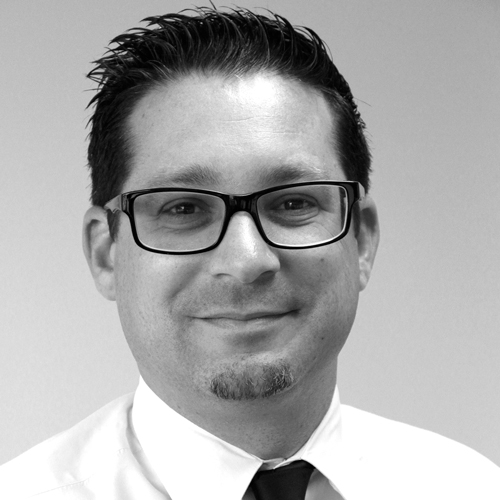The entities of Kaiser Permanente (KP)—a multifaceted organization made up of the Kaiser Foundation Health Plans, Kaiser Foundation Hospitals, and Permanente Medical Groups—are spread out across seven different regions. One of these is Southern California, which itself is split into smaller groups, referred to as service areas. As area information officers (AIO), David Young and James Brady oversee two of these areas in a one-of-a-kind position at KP; Young is responsible for San Bernardino County, Brady for Orange County, and both have their hands full with technology, strategy, business leadership, workplace development, and supporting Kaiser Permanente’s vision.
You both have the unique title of area information officer. What was the impetus behind the creation of that role?
James Brady: There are about 6,000 people in the IT organization at Kaiser Permanente, and there are three tiers of information officer roles: the enterprise CIO, eight regional CIOs, and twenty-one local medical center/service AIOs. As AIOs, we service the local areas, and each AIO has a large span of responsibility—often greater than that of a traditional CIO.
David Young: For example, my team in San Bernardino supports 15,000 computers, 1,000 physicians, and about 8,000 employees. I have two hospitals and sixteen off-site clinics, and Jim has two hospitals, twenty-three clinics, and one building in process in Orange County. The position was created in 2009 by our regional VP, Jim Crawford, with the intent that AIOs would serve as local CIOs and as integral members of business leadership at that level.
What makes the AIO role unique to a traditional CIO position?
Brady: Traditionally, the CIO has oversight over all technology resources and staffing and full control of technology strategy. But at KP, we have a national entity and regional technology entities that are delivering applications and support. Our role is to act as peers and technology partners with all local medical center leadership teams—physicians, nurses, and administration—and be their single point of contact to help develop strategy at the business level for their particular medical center. Between 60 and 70 percent of our time is spent providing insight, translating technology needs, and providing value to the business. We then interface back with the various KP technology enterprises and regional teams to make their vision a reality.
Young: Because we serve as business leaders, we take on more than only technology. For example, I have a passion for workplace development, and Jim is really involved with innovation. The AIO role allows us to expand those passions as business leaders.
How does your AIO role support the priorities and overall mission of Kaiser?
Brady: Our mission at Kaiser Permanente is to provide quality healthcare so all members can live happy and healthy lives. As AIOs, our goal is to partner with the local business to develop their strategy and vision and then enable them to achieve it. All of our roles are truly integrated—doctors, nurses, administrators, technicians, etc. And we’re all in the room together, collaborating and problem solving, so it’s very relationship-based. Nobody can reach our goals alone, so we contribute by bringing our voices to the table.
“The next generation CIO—which is what our AIO role is becoming—is a leader that is connected to the business leaders theyʼre partnering with.”
How is your workflow structured?
Young: It’s a tremendous amount of performance. Right now, we have 120 projects in my area going at once. There are the usual incidents and work orders within our respective areas, but we also get a lot of projects from outside, so it comes down to maintaining a master project list and providing resources to finish our technology road map. And, as to Jim’s point about integration, some of our staff are dotted line reports and some are direct reports, so there is a lot of overlap and coordinating. I have seven direct reports, but the total support team that I’m responsible for is sixty-five. We’re a highly matrixed organization.
It sounds organizationally complex.
Brady: Yes, but that’s another thing that makes KP unique: in every area of the organization, the direct reports may be small in number, but there’s so much emphasis on the partnerships and greater support group that the teams are actually quite large. In IT, for example, we have groups for electronic medical records, imaging and radiology, facilities, pharmacy, lab, and more, and they all have IT components that all roll up to the AIO. We also have an indirect relationship with directors in hospitals and department administrators in medical groups, and we collaborate with them at the VP level.
What makes your similar jobs unique to each other?
Young: We have different member and patient demographic needs, though both areas are growing strong. I’m personally involved in a lot of workforce strategy initiatives and community benefit opportunities. Jim mentioned taking on initiatives at regional and national level based on expertise, and for me, that initiative is VOIP—voice over Internet protocol.
Brady: And I’ve focused on strategy in our local medical center technology road map development by identifying locally deployed applications where we should have regional ones. I was also recently asked to take over a project in the Hawaii region where we’re acquiring three hospitals and moving them to the KP system. That’s another good example of participating in shared regional and national initiatives: it’s about finding areas where we can add value, and there are always niches that need contributions.
What are some leadership characteristics that are essential in your role?
Brady: It’s so important to understand that the next generation CIO—which is what our AIO role is becoming—is a leader that is connected to the business leaders they’re partnering with and supporting. We’re so relationships-based, so to be successful here you have to build them. We live in a collaborative world, where information is available to everyone and partnership is required to get anything done. Understanding others and being able to forge together the strengths we all bring to the table is the key to furthering the vision of the organization. To be part of providing that high-quality care is exciting.
Looking to the future, what do you see on the horizon for Kaiser Permanente?
Young: Lots of my work outside of technology is based on leadership development and workforce strategy. I’m passionate about this continued growth and development of managers and emerging leaders and helping them grow into their roles. I love seeing people move up just like I did over the past twenty years, and I believe that investing in those up-and-coming leaders is what will keep us strong for years to come.

